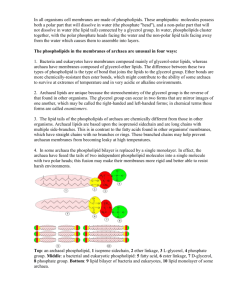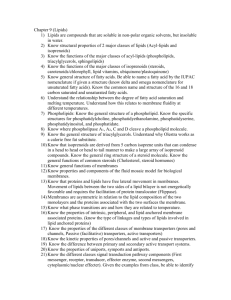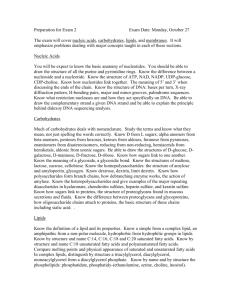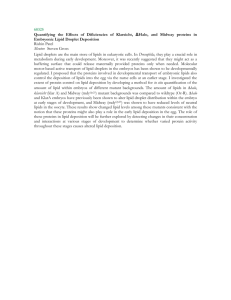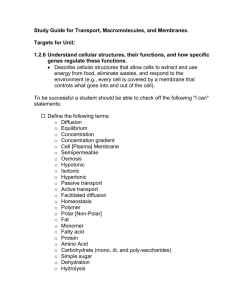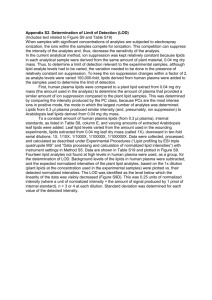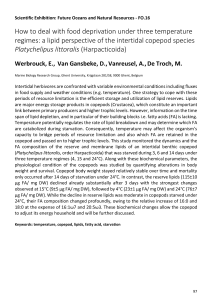Membrane Lipid Biosynthesis in Hyperthermophilic Archaea
advertisement
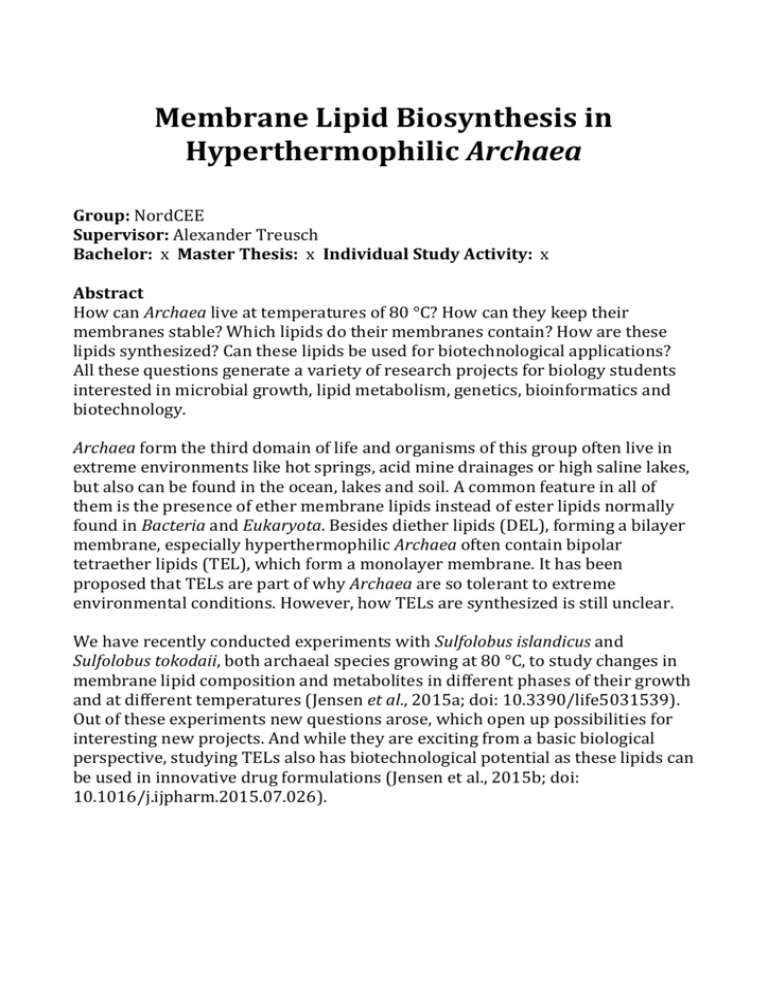
Membrane Lipid Biosynthesis in Hyperthermophilic Archaea Group: NordCEE Supervisor: Alexander Treusch Bachelor: x Master Thesis: x Individual Study Activity: x Abstract How can Archaea live at temperatures of 80 °C? How can they keep their membranes stable? Which lipids do their membranes contain? How are these lipids synthesized? Can these lipids be used for biotechnological applications? All these questions generate a variety of research projects for biology students interested in microbial growth, lipid metabolism, genetics, bioinformatics and biotechnology. Archaea form the third domain of life and organisms of this group often live in extreme environments like hot springs, acid mine drainages or high saline lakes, but also can be found in the ocean, lakes and soil. A common feature in all of them is the presence of ether membrane lipids instead of ester lipids normally found in Bacteria and Eukaryota. Besides diether lipids (DEL), forming a bilayer membrane, especially hyperthermophilic Archaea often contain bipolar tetraether lipids (TEL), which form a monolayer membrane. It has been proposed that TELs are part of why Archaea are so tolerant to extreme environmental conditions. However, how TELs are synthesized is still unclear. We have recently conducted experiments with Sulfolobus islandicus and Sulfolobus tokodaii, both archaeal species growing at 80 °C, to study changes in membrane lipid composition and metabolites in different phases of their growth and at different temperatures (Jensen et al., 2015a; doi: 10.3390/life5031539). Out of these experiments new questions arose, which open up possibilities for interesting new projects. And while they are exciting from a basic biological perspective, studying TELs also has biotechnological potential as these lipids can be used in innovative drug formulations (Jensen et al., 2015b; doi: 10.1016/j.ijpharm.2015.07.026). Potential project topics can include: studying changes in metabolites during different culture conditions of Sulfolobus islandicus studying the membrane lipid and metabolite composition in other archaeal species optimizing culture conditions for the production of specific lipids bioinformatic analysis of archaeal genomes for genes involved in lipid biosynthesis expression levels of genes involved in lipid biosynthesis during different growth conditions If you are interested in a project that blends basic research questions and biotechnological potential then please get in touch and we can discuss the possibilities. Alexander Treusch, Associate Professor, atreusch@biology.sdu.dk


